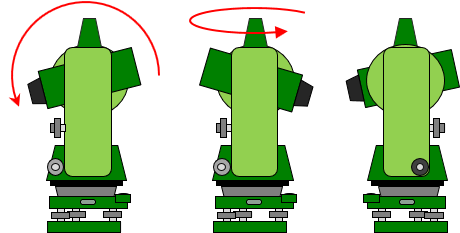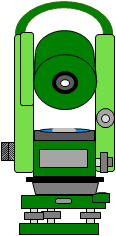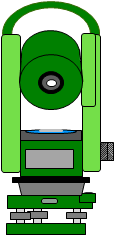4. Positions
Measurements are taken with the TSI in either the direct or reverse position. The difference between the two positions is the rotation of the telescope about the HA and the TSI around the VA, Figure A-5. Changing the position and re-sighting the same target reverses the instrument's physical geometry.
 |
| Figure A-5 Direct to Reverse Position |
Which is the direct and which is the reverse TSI position?
On TSIs with a display on a single side of the instrument, it is convenient to call the direct position the one in which the display faces the operator; the reverse position would be with the display opposite the operator.
On dual display TSIs generally the direct position is when the vertical circle is to the operator's left side. This is also referred to as circle left or face left. The reverse position would have the vertical circle to the operator's right (circle right or face right), Figure A-6.
 |
 |
|
| (a) Direct: Left | (b) Reverse: Right | |
| Figure A-6 Vertical Circle Side |
||
Ultimately it really doesn't matter which position is direct or reverse. What's important, as we'll see in TSI applications, is that by measuring in direct and reversed positions many instrumental errors are compensated.